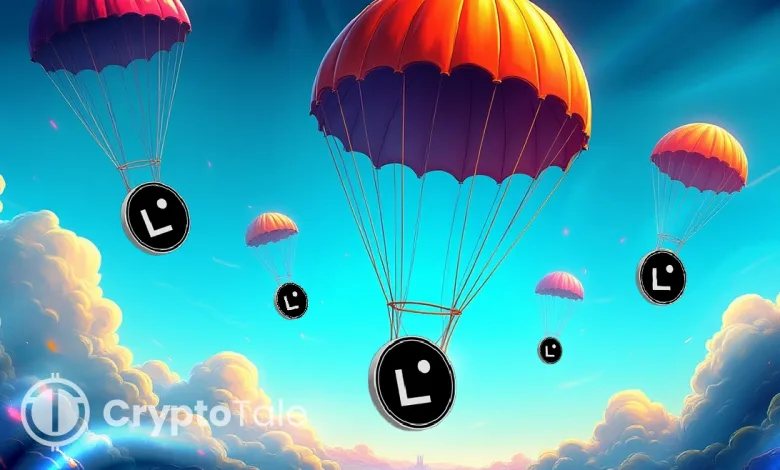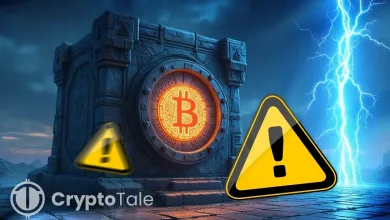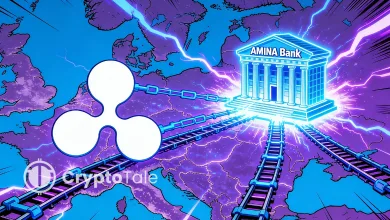Linea’s Airdrop Launches Successfully Despite Sequencer Issue

- Linea’s token airdrop launches with 9 billion tokens, boosting Ethereum’s Layer-2 network.
- Eligible users have 90 days to claim their LINEA tokens, ensuring broad participation.
- Linea quickly resolved a sequencer issue, minimizing any impact on the airdrop process.
The Linea Association successfully conducted its token generation event (TGE) on Wednesday by distributing over 9 million tokens to eligible users, thus boosting its presence in the blockchain ecosystem. The event is part of its strategy for expanding its ecosystem and for encouraging activity in the Ethereum network.
What is the LINEA Token?
According to the Linea Association, LINEA is the native token of the Ethereum Layer-2 network, developed by Consensys. The token also seeks to improve Ethereum’s scalability by making transactions more affordable and faster. However, LINEA isn’t the gas token, and transaction fees are paid with Ethereum (ETH).
LINEA will have a total supply of 72 billion, which is 10 times more than the original supply of Ethereum, and it operates using a buyback and burn mechanism. Part of the ETH transaction costs will be allocated to purchasing and burning LINEA tokens, decreasing its circulating supply in the future. As Head of Linea, Declan Fox clarified, “We focus on building an Ethereum-aligned network with the capacity to incentivize users while maintaining Ethereum’s decentralized structure”.
Airdrop Distribution and Eligibility Process
The LINEA token allocation is divided into three primary categories, including early adopters, ecosystem participants, and Consensys treasury. Early adopters who have joined Linea’s Voyage and Surge campaigns will receive 10% of the total supply. The airdrop has a total of over 9.36 billion tokens, and users will have 90 days to claim their tokens before the deadline on December 9.
Furthermore, the remaining 75% of tokens will be allocated to ecosystem participants, including liquidity providers, developers, and other contributors to the Linea network. These tokens will also be distributed through the Linea Consortium, a group of Ethereum-oriented organizations. Highlighting the event’s success, the Linea team reiterated that the airdrop was a part of their strategy to reward those who have contributed to their growth.
Buying and Trading LINEA Tokens
Following the TGE, LINEA tokens may be purchased or traded on various centralized exchanges, such as Binance, HTX, Upbit, and Crypto.com. In addition, these exchanges will provide liquidity, where users can buy, sell, and trade the token. Linea has also made efforts to establish long-term engagement as part of its token allocation to strategic liquidity events and collaborations with Binance Alpha.
Linea’s strategies to collaborate with leading platforms like Binance Alpha are expected to help the network grow and deliver value to its users. The network’s liquidity programs will encourage broader market participation and attract institutional investors.
Ecosystem and Growth Incentives
Linea’s tokenomics such as its buyback and burn mechanics, make it a deflationary asset within Ethereum’s Layer-2 ecosystem. The network’s focus on projects aligned with Ethereum and robust institutional backing give it support for long-term success. The airdrop is the biggest token release in Ethereum in recent years. The strategy that Linea follows encourages engagement and development in the decentralized finance (DeFi) ecosystem. Moreover, the activities of the network attract users, developers, and institutions, hinting at a critical future for Ethereum.
Sequencer Issue Collides with Linea Airdrop Launch
Despite the TGE launch success, Linea experienced a temporary problem with its mainnet sequencer, which is responsible for ordering transactions. However, the engineering team quickly identified and solved the problem. Although Linea has not stated that the sequencer was related to the airdrop, the interference created concerns regarding the distribution time. The swift resolution minimized any potential impact on the airdrop process.




